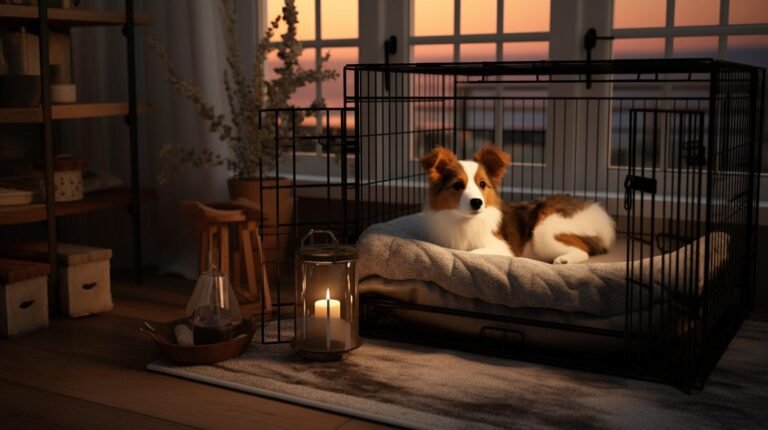Are you familiar with the phrase ‘scaredy-cat’? It’s a well-known expression meant to playfully tease someone who is easily frightened. But have you ever heard the term ‘scaredy-dog’? Hmm… Maybe not. That’s because dogs, unlike their feline counterparts, are inherently brave and action-oriented creatures. Yet, despite being man’s best friend and faithful guardians, dogs also experience bouts of fear, anxiety, and loneliness.
One way many pet parents try to alleviate these feelings is by making their dog’s crate cozy and providing a calming, safe haven, often resorting to covering their crates with blankets. But the question that stirs a lot of debate among dog owners is whether this approach is indeed the best one. Is draping a blanket over your dog’s crate a safe and effective solution when dealing with dog anxiety or heat? Let’s sink our teeth into this bone of contention.
Firstly, let’s explore the psychology behind it all. Dogs are den animals by nature. They instinctively seek out small, enclosed spaces for security, comfort. These small enclosed spaces, they believe, are calming environments, providing them a respite from the hubbub and threats of the outside world. Applying this understanding, pet parents rightly so believe a dog crate covered with a blanket mirrors these den-like conditions, thereby reducing stress and anxiety.
A covered crate blocks out external stimuli, from flashing lights to noisy children, which can sometimes be overwhelming to your furry friend. Imagine it as a ‘Do not disturb’ sign for your dog, giving him a quiet, relaxing ‘me-time’.
Furthermore, the protection offered by a covered crate is hugely beneficial for dogs who fear fireworks or thunderstorms. The blanket acts as soundproofing, at least to a certain extent. Not only does it shield your loving companion from the bulk of the harsh noises, but it also conceals alarming flashes of light, thus minimizing fear and anxiety during such events.
However, while these points are indeed valid, it’s worth noting that not all dogs react equally to being put in a blanketed crate. And that’s because dogs are as individual in their habits and preferences as we humans. Some dogs may find a crate cover comforting, others may feel it restrictive or frightening, especially dogs with claustrophobia. Thus, it’s essential to observe your pet’s behavior and see if they show any signs of discomfort.
Examining the blanket approach from a health and safety perspective also reveals some important factors. Prime among them is your canine’s need for ventilation. While a blanket can offer darkened serenity, it can also block essential airflow. In extreme cases, this can lead to overheating, specially in breeds susceptible to heat stress like Bulldogs, Pugs, Boxers, and so forth. Therefore, balance is the key. You should always ensure that the blanket you’re using is breathable, lightweight, and covers the crate in a manner that air can still circulate.
As far as safety is considered, one must ensure that the blanket over the crate is secure. A loose blanket can become a hazard if your dog pulls it into the crate, leading to a potential choking risk.
So, should you or shouldn’t you use a blanket over a crate? The answer is, unsurprisingly, it depends.
Remember, no two dogs are the same, even if they are of the same breed or from the same litter. Before crating your dog, understand his unique temperament and preferences. Introduce the blanketed crate gradually and observe any signs of unease or discomfort. If your dog appears to enjoy the covered crate, using it should be fine.
Nevertheless, during high temperatures, it may be best to remove the blanket to prevent overheating, or if you have a breed that struggles with heat. Additionally, ensure the blanket you’re using does not present a choking hazard and is secure.
In the grand scheme of pet parenting, covering a dog crate with a blanket falls directly into the bracket of personal judgment calls. The more attentive and observant you are, the easier it becomes to make these kinds of decisions and ensure a happy, healthy, and safe environment for your four-legged family member.



